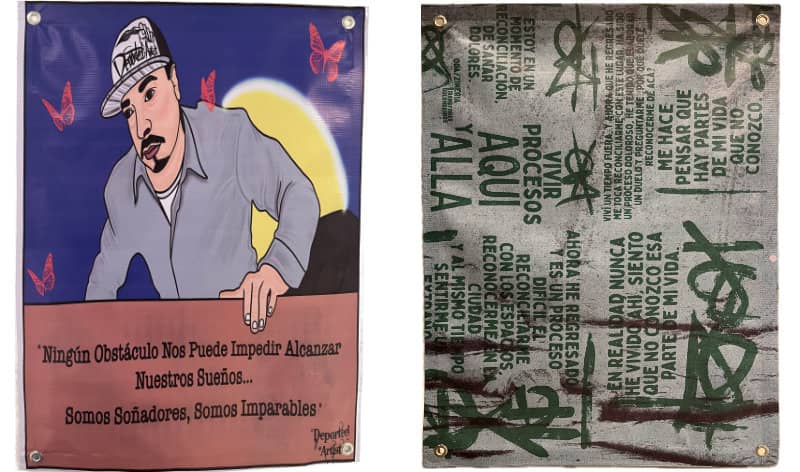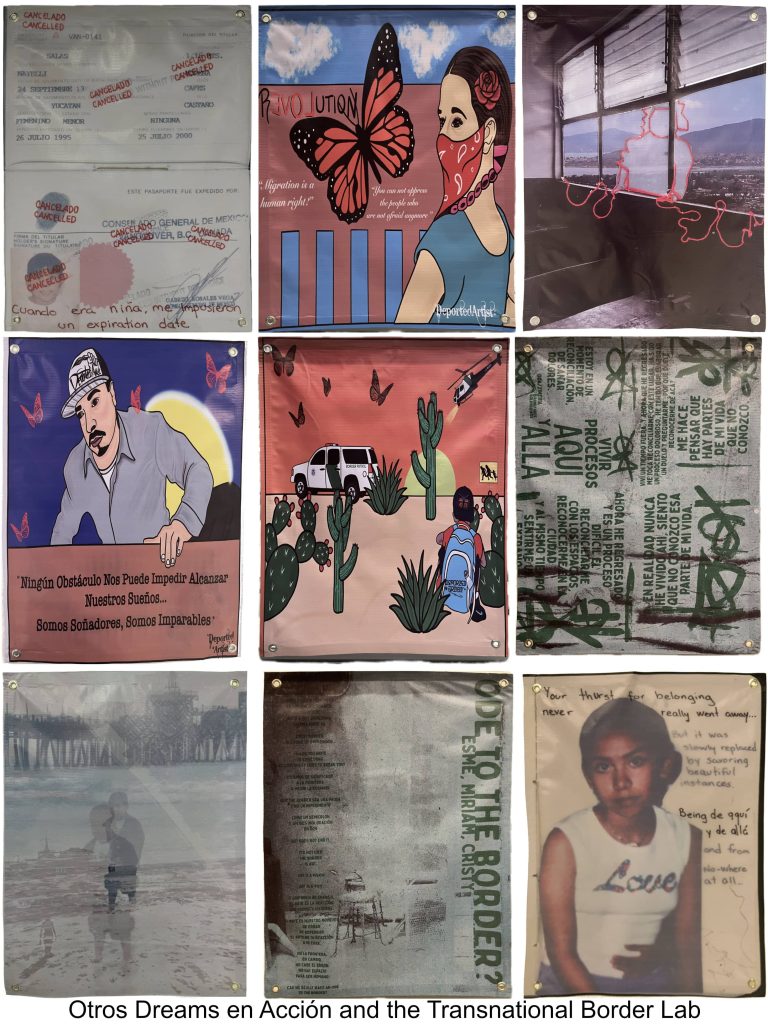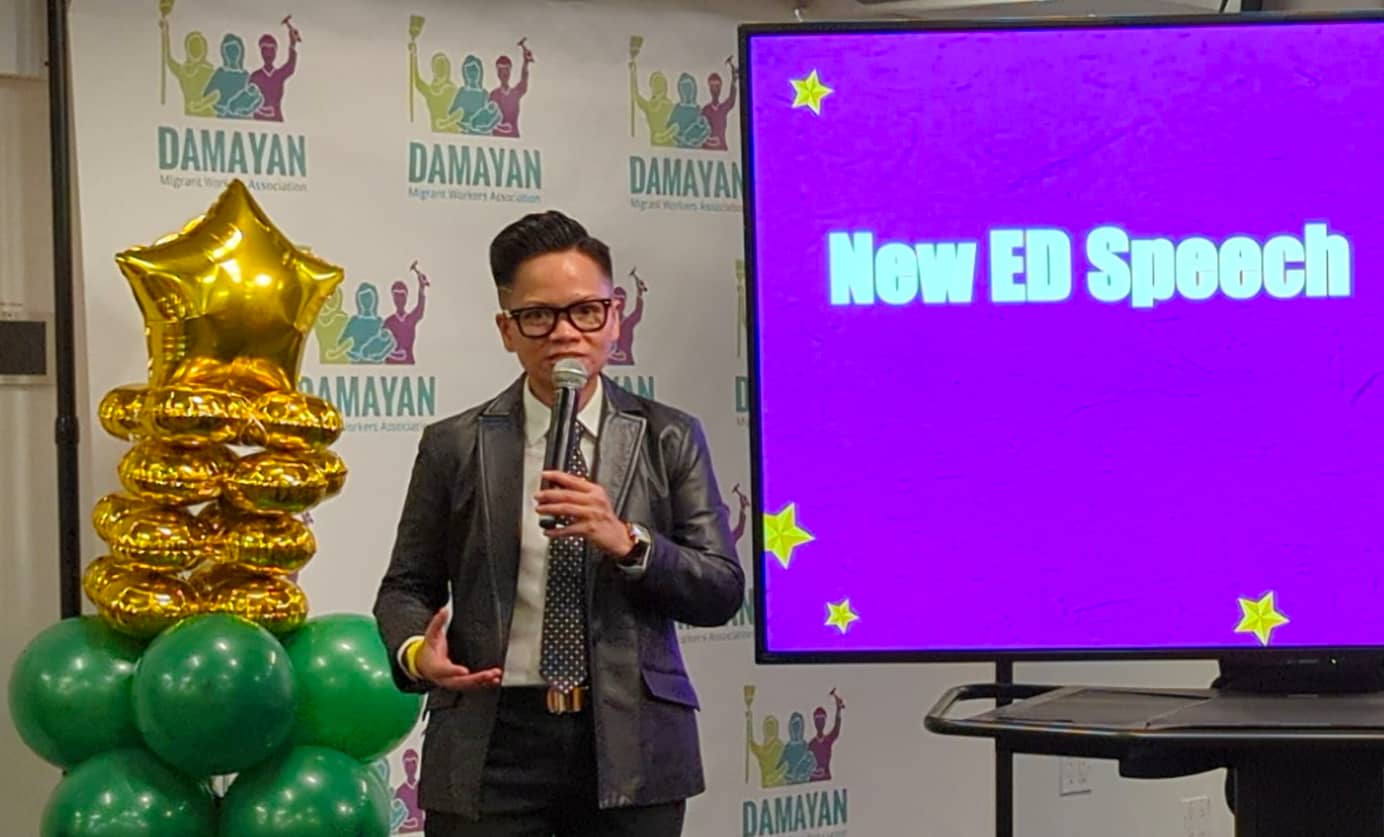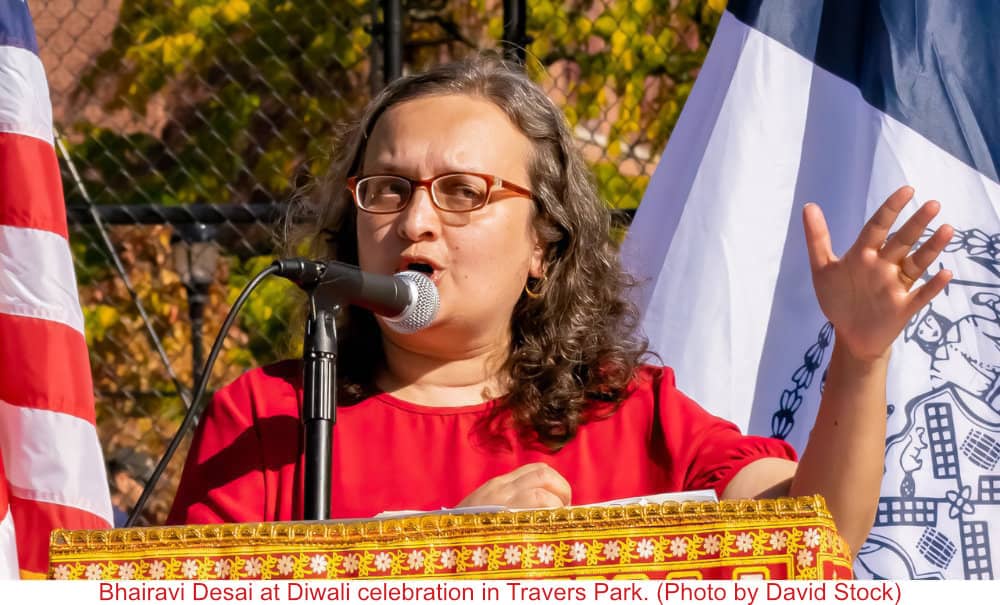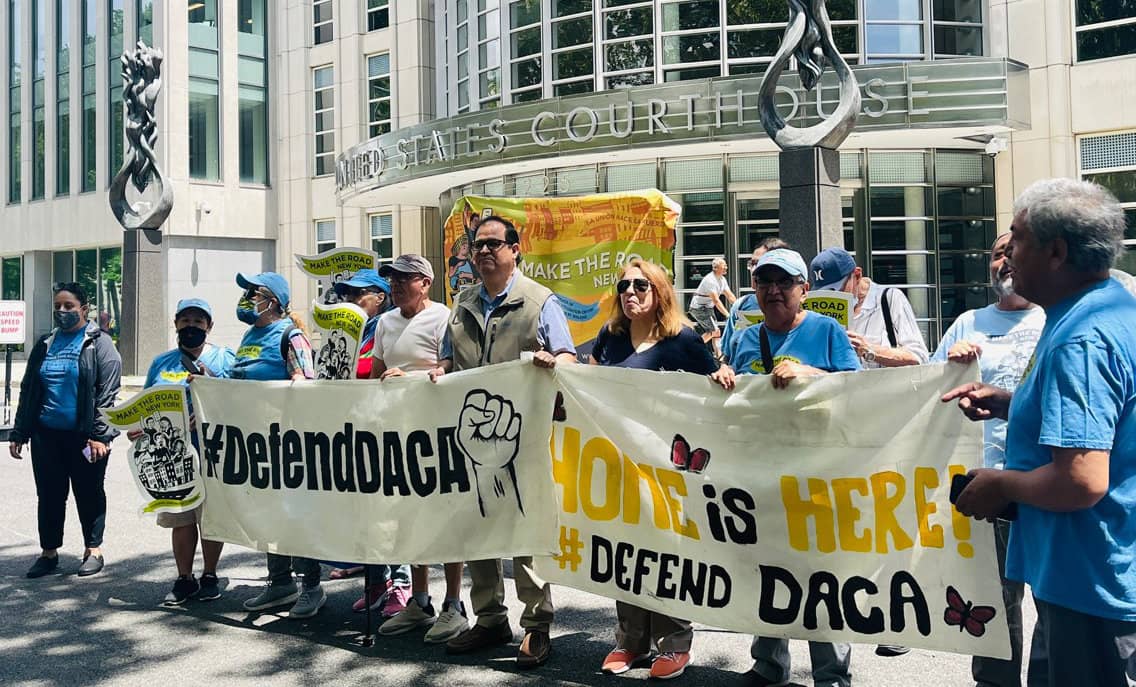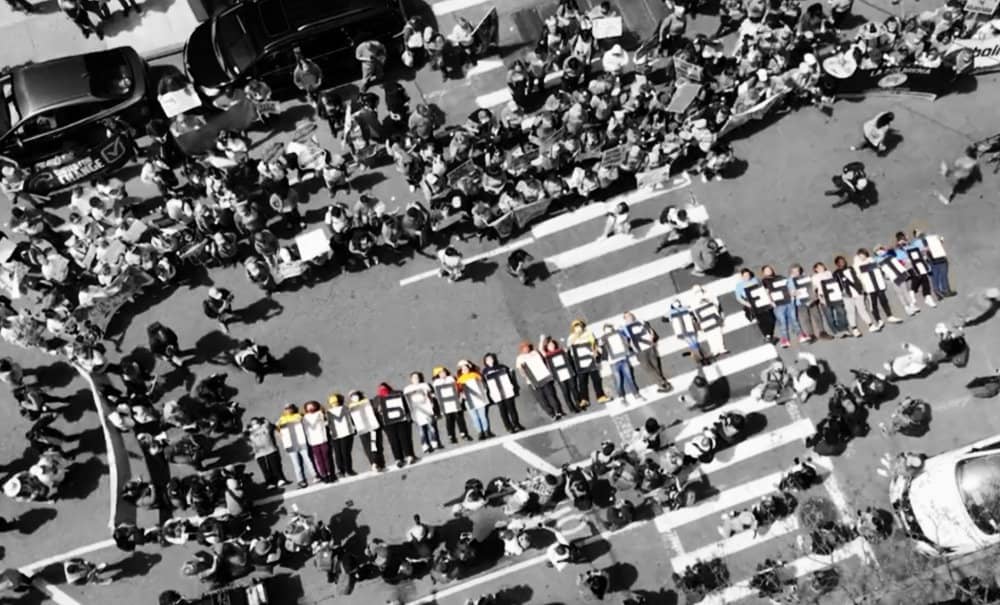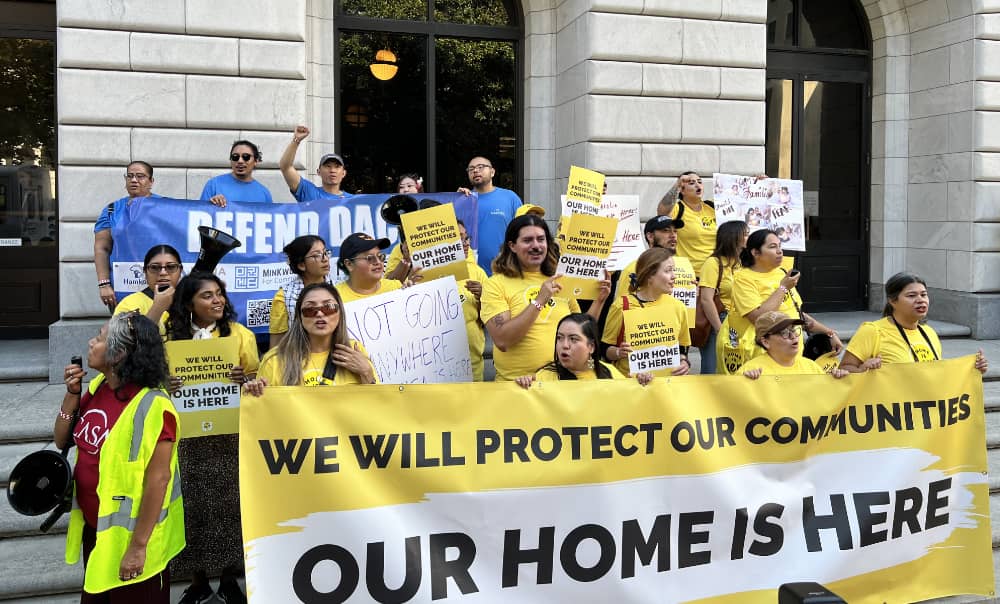
Dear friends,
Like many of you, we are caught in a nightmare interlude where our worst fears are not yet real but visible in a gathering storm. Trump and the MAGA movement’s capture of national power is a threat to so much—Constitutional protections, the power of truth, hard-won victories of anti-racism and feminism, Palestinian solidarity, economic justice, historical memory, our beloved communities. But nothing is more threatened right now than the lives of undocumented immigrants residing in the US and especially in New York City. Strengthening our practice of immigrant solidarity, and in the face of voting data showing a dramatic increase in established immigrant-citizens voting for a fascist president, will require collaboration and work. Please. Do not give up.
We offer an article on the pending court decision re: DACA recipients, affecting the lives of over 530,000 Dreamers. We then give our first take on the post-election US landscape of both dread and resistance.
Newsletter highlights:
- DACA decision pending
- The votes are in: what next for immigrant politics?
1. Conservative 5th Circuit Court May Decide Dreamers’ Fate
“DACA has always been only a temporary solution, and Congress must act to provide certainty.” —Jennie Murray, President and CEO of the National Immigration Forum
Over 300 protesters participated in the Home is Here Coalition’s action in New Orleans last month. On October 10, they gathered at the 5th US Circuit Court of Appeals where judges listened to the latest arguments about the legality of the Deferred Action for Childhood Arrivals (DACA) initiative. This was the 14th hearing that has been held to challenge this program; this one specifically challenged recent efforts by the Biden Administration to turn DACA into a federal regulation to protect it from future legal action.
Congress has repeatedly failed to pass laws related to undocumented US residents who have lived here since childhood. It could establish legal pathways to citizenship for young ‘Dreamers’ who have started careers, created families, bought homes, and built businesses in the US. But, for a dozen years, DACA has been the sole program that provided them any federal protection.
The US Supreme Court’s 2023 decision in United States vs. Texas determined that states cannot challenge the federal government’s authority to establish immigration priorities. However, the 5th Circuit Court has challenged that rule, when it prevented US Customs and Border Protection from removing the razor wire that the Texas National Guard placed on land and in the water to harm migrants along the Mexican border.
“In recent years, the 5th Circuit, which serves Texas, Louisiana, and Mississippi, has allowed extremist lower court judges to issue sweeping, politically fraught rulings that advance right-wing policy positions…[T]he court has used flimsy legal theories to overturn decades of precedent.“–Center for American Progress
While a majority of Americans want our leaders to create legislative security for Dreamers, many Republican states argue they have incurred damages and injuries from spending millions of dollars on DACA recipients. MALDEF, the Mexican American Legal Defense and Educational Fund, represented DACA recipients at the 5th Circuit court hearing and argued those allegations are not proven.
There is no timeline by which the court must rule on these latest arguments. To some following this case, the court panel seemed divided. During the 71-minute discussion, there was speculation about whether Texas has legal standing to challenge the DACA program. One of the three judges cited briefs filed by 22 Democratic-led states detailing the economic benefits that program recipients had brought to their communities. “How could a single judge tell all 22 other states, who are so grateful for these people, that actually they’ve all got to leave the United States?” asked Judge Higginson. Despite this, people following the latest challenges to DACA anticipate the case will move to the Supreme Court no matter the outcome.
The fanatical and belligerent America First Legal (AFL) organization supports this latest legal attack on DACA. AFL was founded in 2021 by Stephen Miller, a hatemonger anti-immigration hard-liner, and soon-to-be deputy chief of policy in the next Trump administration, whose tactic is to demonize immigrants. Fortunately, there are organizations such as the President’s Alliance on Higher Education and Immigration that filed an amicus brief supporting MALDEF’s defense of DACA. Many New York universities and colleges signed on to the brief, noting how Dreamers have outperformed peers and made significant contributions to society. Map the Impact data shows how DACA-eligible individuals contribute billions to the US economy. Deporting DACA recipients would cost $60 billion and result in a $280 billion economic loss over the next decade. Map the Impact also notes that immigrants, who provide for our most vital healthcare needs, are twice as likely to work as home health aides, physicians, and surgeons.
And so we wait. The court may rule that DACA is legal. It may rule that Texas and other states have no injury and so cannot bring suit. It may agree with a prior 5th Circuit court ruling from 2023 which declared DACA unlawful. If that last possibility becomes true then it can only be hoped that the court will not order DACA to end suddenly. If DACA renewals are ended, then an estimated 1,000 DACA recipients would be forced out of their jobs every week for the next two years. It would disrupt not only DACA recipients, but their families, their workplaces, and their communities.
“We all should be clear-eyed about who and what is at stake in the DACA case. It goes beyond immigration policy and law and straight to the question of what type of country we aspire to. Hundreds of thousands of Dreamers have relied on DACA to become, quite literally, the embodiment of the American Dream.” – Vanessa Cárdenas, Executive Director, America’s Voice
WHAT CAN WE DO?
- Sign the United We Dream petition calling on President Biden to strengthen and expand the DACA program.
- If you are an employer or have influence with one, review the fwd.us guide to sponsoring employment of a DACA recipient.
2. Heartbreak and Defiance
“We have had an enormous setback in this election because the fascists won a lot of working-class support. ” –Alexandria Ocasio-Cortez
It will take some time to come to grips with all the implications of the MAGA takeover of the White House and Senate. But we already know that it means trouble for immigrants and asylum seekers. Immigrant justice organizations on the national and local levels are digging in for a long, hard fight. In the immediate aftermath of the election, many of them—including NICE, Make the Road New York, the National Day Laborer Network, Chhaya, and the New York Immigration Coalition—released statements on social media and in email blasts that combined heartbreak and defiance. In a November 7 email message to supporters, United We Dream summed up this widespread dual sentiment:
“I’m not going to lie, it’s going to be hard. We must unapologetically oppose Trump at every turn. But we’re not giving up. Home is here, and we’re here to stay.”
Since migration and the border have become central to US politics, grassroots immigrant justice groups will undoubtedly play a leading role in opposing the Trump/Vance administration’s fascist agenda. In this respect, NYC activism might serve as a model for the whole country. In fact, the resistance has already started locally. On November 9, a mass rally was held at Columbus Circle, sponsored by dozens of organizations.
One striking feature of the recent election is that voter attitudes toward immigrants and refugees have hardened quickly and dramatically. According to the New York Times, the percentage of those who want the US to clamp down on immigration went from 28 percent in 2020 to 55 percent this July. As we have recently reported, many people also say they support Trump’s threat of mass deportations.
Even more disturbing is that many immigrants have come to share these views. Exit polls show that large numbers of Latino and Asian voters in Queens and the Bronx backed Trump. In a “pronounced shift,” the Right’s rhetoric and false narratives about asylum seekers—including the slander that asylum seekers are criminals and economic parasites—have gained traction among more established immigrants. On Instagram, the National Day Laborer Network commented acerbically: “45% of the Latinos/as who voted, voted for Trump. 54% of the Latino males who voted, voted for Trump. Aligning with whiteness, especially if you are a dark skin Latino, to feel powerful is an illusion.”
Persistence and determination will certainly be crucial to the resistance. But to fight back effectively, progressive activists will have to find ways to re-establish mass support for immigration and asylum, including rebuilding unity among immigrants and refugees themselves.
“As an immigrant myself and an activist who lived through Trump’s first presidency, I have seen firsthand the impact of his policies. I also had, and continue to have, the privilege to witness how New Yorkers united to defend and advocate for our immigrant neighbors, families and friends.” –Nilbia Coyote, Executive Director, New Immigrant Community Empowerment (email Nov.7)
WHAT CAN WE DO?
- Say NO to violent, racist restrictions on asylum
- Support the Immigrant Defense Project and the ICE Out! NYC campaign
In solidarity and with collective care,
Jackson Heights Immigrant Solidarity Network (JHISN)
Follow @JHSolidarity on Facebook and Twitter and share this newsletter with friends, families, neighbors, networks, and colleagues so they can subscribe and receive news from JHISN.
